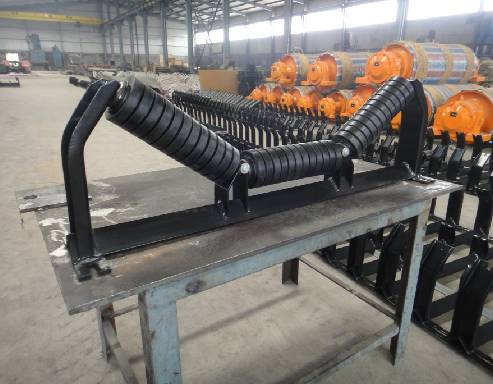 Afrikaans
Afrikaans  Albanian
Albanian  Amharic
Amharic  Arabic
Arabic  Armenian
Armenian  Azerbaijani
Azerbaijani  Basque
Basque  Belarusian
Belarusian  Bengali
Bengali  Bosnian
Bosnian  Bulgarian
Bulgarian  Catalan
Catalan  Cebuano
Cebuano  Corsican
Corsican  Croatian
Croatian  Czech
Czech  Danish
Danish  Dutch
Dutch  English
English  Esperanto
Esperanto  Estonian
Estonian  Finnish
Finnish  French
French  Frisian
Frisian  Galician
Galician  Georgian
Georgian  German
German  Greek
Greek  Gujarati
Gujarati  Haitian Creole
Haitian Creole  hausa
hausa  hawaiian
hawaiian  Hebrew
Hebrew  Hindi
Hindi  Miao
Miao  Hungarian
Hungarian  Icelandic
Icelandic  igbo
igbo  Indonesian
Indonesian  irish
irish  Italian
Italian  Japanese
Japanese  Javanese
Javanese  Kannada
Kannada  kazakh
kazakh  Khmer
Khmer  Rwandese
Rwandese  Korean
Korean  Kurdish
Kurdish  Kyrgyz
Kyrgyz  Lao
Lao  Latin
Latin  Latvian
Latvian  Lithuanian
Lithuanian  Luxembourgish
Luxembourgish  Macedonian
Macedonian  Malgashi
Malgashi  Malay
Malay  Malayalam
Malayalam  Maltese
Maltese  Maori
Maori  Marathi
Marathi  Mongolian
Mongolian  Myanmar
Myanmar  Nepali
Nepali  Norwegian
Norwegian  Norwegian
Norwegian  Occitan
Occitan  Pashto
Pashto  Persian
Persian  Polish
Polish  Portuguese
Portuguese  Punjabi
Punjabi  Romanian
Romanian  Russian
Russian  Samoan
Samoan  Scottish Gaelic
Scottish Gaelic  Serbian
Serbian  Sesotho
Sesotho  Shona
Shona  Sindhi
Sindhi  Sinhala
Sinhala  Slovak
Slovak  Slovenian
Slovenian  Somali
Somali  Spanish
Spanish  Sundanese
Sundanese  Swahili
Swahili  Swedish
Swedish  Tagalog
Tagalog  Tajik
Tajik  Tamil
Tamil  Tatar
Tatar  Telugu
Telugu  Thai
Thai  Turkish
Turkish  Turkmen
Turkmen  Ukrainian
Ukrainian  Urdu
Urdu  Uighur
Uighur  Uzbek
Uzbek  Vietnamese
Vietnamese  Welsh
Welsh  Bantu
Bantu  Yiddish
Yiddish  Yoruba
Yoruba  Zulu
Zulu Impact Rollers for Enhanced Performance in Belt Conveyor Systems
Impact Rollers for Belt Conveyors Enhancing Performance and Longevity
Belt conveyors are essential components in various industries, including mining, manufacturing, and logistics, serving as a vital link in the transportation chain. One of the critical elements that can significantly affect the performance and longevity of a belt conveyor system is the impact roller. In this article, we will explore the function, benefits, and selection criteria for impact rollers, highlighting their importance in achieving efficient and reliable conveyor operations.
Understanding Impact Rollers
Impact rollers are specialized components of belt conveyor systems designed to absorb and dissipate the energy from material loads as they fall onto the belt. They are typically located at transfer points, where bulk materials are loaded onto the conveyor. Their primary function is to cushion the impact of the material being transported, thereby reducing belt wear and tear, minimizing damage, and ensuring a smoother operation.
Key Benefits of Impact Rollers
1. Reduced Belt Wear One of the most significant advantages of using impact rollers is the reduction in belt wear. By absorbing impact forces, these rollers help prevent the deformation and damage of the conveyor belt, which can lead to expensive repairs and downtime. As a result, the lifespan of the belt is extended, leading to lower maintenance costs.
2. Energy Efficiency An efficient conveyor system is vital for productivity. Impact rollers help in reducing the friction and resistance that can occur during the loading process. By ensuring that the belt moves smoothly even under heavy loads, these rollers contribute to better energy efficiency, ultimately lowering operational costs.
3. Noise Reduction Operational noise can be a concern in various working environments. Impact rollers can significantly reduce the noise generated during the loading of materials onto the conveyor. This is particularly beneficial in facilities where noise levels need to be managed for safety or regulatory reasons.
4. Improved Material Flow By providing a stable and cushioned loading point, impact rollers facilitate a more consistent material flow. This helps in preventing material spillage and ensuring that the load is evenly distributed across the belt. A well-distributed load minimizes the risk of belt misalignment and operational disruptions.
impact roller for belt conveyor

Selecting the Right Impact Roller
When choosing impact rollers for a belt conveyor system, several factors need to be considered to maximize their efficiency and effectiveness
1. Material Type The type of material being transported plays a crucial role in determining the right impact roller. Heavier or more abrasive materials may require rollers with specific designs and materials to withstand the impact and reduce wear.
2. Roller Diameter and Length The diameter and length of the impact rollers should be compatible with the conveyor system's design. Choosing the proper size ensures effective load cushioning and optimal performance.
3. Shell Thickness The shell thickness of the impact roller can affect its durability and performance. Thicker shells generally provide better resistance against wear and impact forces, prolonging the roller's lifespan.
4. Environmental Conditions Consider the environmental factors such as temperature, humidity, and exposure to chemicals. Selecting impact rollers that can withstand harsh conditions will ensure reliable performance in any operational environment.
5. Installation and Maintenance Finally, consider the ease of installation and maintenance when selecting impact rollers. Opt for designs that allow for straightforward installation and require minimal maintenance to keep downtime to a minimum.
Conclusion
Impact rollers are vital components in belt conveyor systems, playing a critical role in enhancing performance and ensuring longevity. By reducing belt wear, improving energy efficiency, and facilitating a smoother material flow, they contribute to the overall effectiveness of conveyor operations. When selecting impact rollers, it is essential to consider factors such as the type of material being transported, roller specifications, and environmental conditions. By prioritizing these considerations, businesses can optimize their conveyor systems and achieve greater operational efficiency. Investing in high-quality impact rollers is a proactive approach that pays dividends in productivity and reduced maintenance costs over time.
-
Revolutionizing Conveyor Reliability with Advanced Rubber Lagging PulleysNewsJul.22,2025
-
Powering Precision and Durability with Expert Manufacturers of Conveyor ComponentsNewsJul.22,2025
-
Optimizing Conveyor Systems with Advanced Conveyor AccessoriesNewsJul.22,2025
-
Maximize Conveyor Efficiency with Quality Conveyor Idler PulleysNewsJul.22,2025
-
Future-Proof Your Conveyor System with High-Performance Polyurethane RollerNewsJul.22,2025
-
Driving Efficiency Forward with Quality Idlers and RollersNewsJul.22,2025





























